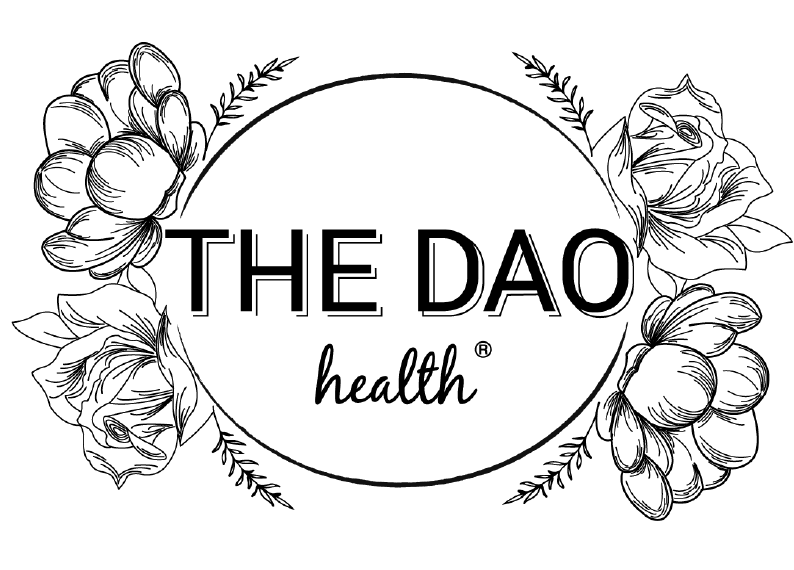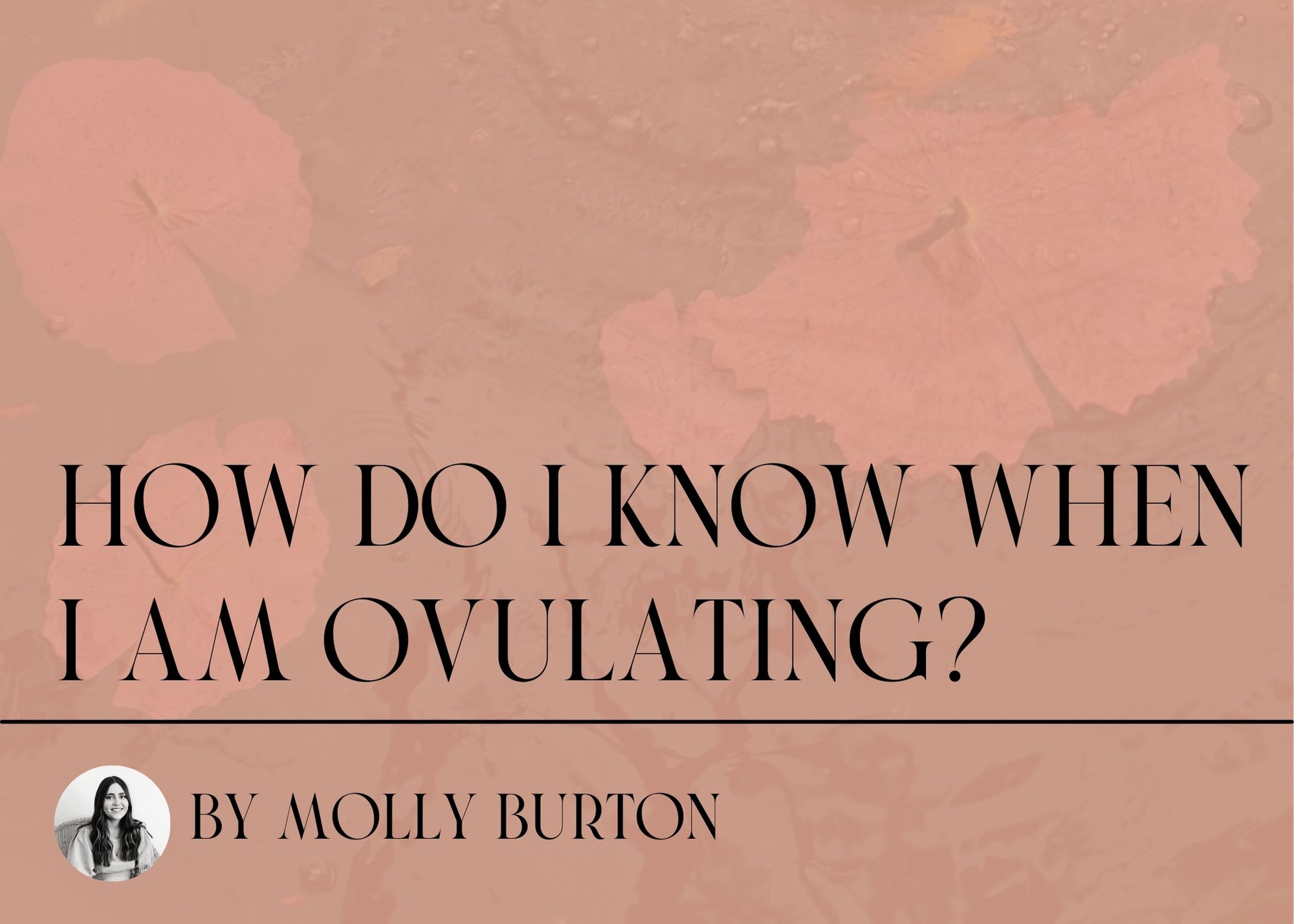The Dao Does… How do I know when I am ovulating? ~
But how do I know when I am ovulating? Whether you’re actively trying to conceive, aiming to regulate your menstrual cycle, or simply seeking a deeper connection with your body, ovulation is a pivotal event in your reproductive cycle. The ovarian continuum encompasses a woman’s entire lifetime, commencing with fertilisation during intrauterine life and concluding with menopause. At the onset of reproductive years, women possess roughly 500,000 follicles containing oocytes (eggs), but only around 500 of them will be released through ovulation (1). While ovulation has long been acknowledged as a crucial reproductive process, recent evidence highlights its significance as an indicator of overall health. Numerous factors, including hormonal fluctuations, stress, restrictive diets, and illnesses, can significantly impact the ovulation process. Therefore, comprehending and promoting awareness of the physiological signs of ovulation is crucial for assessing one’s overall well-being.
Benefits of ovulation ~
According to Endocrinology professor Jerilynn Prior, ‘ovulatory cycles are both an indicator and a creator of health’. Therefore, consistent ovulation signifies a well-functioning body with an adequate fuel supply (specifically carbohydrates) and minimal stress. It ensures that women receive their monthly dose of progesterone, which is crucial for long-term health. Progesterone plays a role in building bone density and metabolic reserves, supporting overall well-being throughout the post-menopausal years. This is precisely why it is important to prioritise natural ovulation while it is still possible (2).
The process of ovulation ~
The ovulatory cycle is regulated by various mechanisms in the body. Hormones produced by the ovary control the release of other hormones such as kisspeptin, gonadotropin-releasing hormone (GnRH), follicle-stimulating hormone (FSH), and luteinizing hormone (LH). These hormones influence the production of ovarian hormones.
At the start of each cycle, FSH levels increase, leading to the growth and development of follicles. This results in higher levels of estradiol, a hormone that causes changes in the uterus lining, cervical opening, and cervical mucus. As follicles continue to grow, estradiol and inhibin work together to decrease FSH levels, signaling negative feedback to the hormonal axis in the body.
As one follicle becomes dominant, it produces high levels of estradiol, which switches the feedback mechanism to positive. This stimulates the release of GnRH and a surge of LH, which triggers ovulation (release of the egg) and the formation of the corpus luteum. The corpus luteum produces progesterone, which prepares the uterus for a possible pregnancy. If fertilisation does not occur, the corpus luteum regresses, leading to a decrease in hormone levels and the beginning of a new cycle (1).
The timing of ovulation ~
You may have heard that ovulation typically occurs on day 14 of a 28-day menstrual cycle, but it is not the same for everyone, and only 2-3% of the female population have a 28-day cycle. For most women, the typical menstrual cycle ranges from 28 to 32 days, with ovulation occurring between days 10 and 19, approximately 12 to 16 days before the next period. In a healthy woman, ovulation usually happens 14 days before the start of the next period. So, if your cycle lasts 35 days, ovulation will likely occur on day 21 (3).
However, it’s important to note that the timing of ovulation can vary from cycle to cycle and from woman to woman. This is why it’s beneficial to track your menstrual calendar for at least three months to gain a better understanding of your own ovulation pattern. By becoming familiar with your body’s menstrual cycle, you can more accurately estimate when ovulation is likely to occur.
So, how do I know? ~
1. Cervical Mucus
Cervical mucus is your best friend but can be hard to decipher if you aren’t sure what you are looking for. Due to the increasing estrogen levels during the follicular phase, this gives rise to the production of cervical mucus. The cervical mucus becomes more abundant and begins to turn clearer, stretchy, and more slippery or lubricative in texture. This mucus is often to referred to as ‘fertile’ or ‘egg-white cervical mucus’ and indicates a higher likelihood of ovulation occurring or being imminent.
2. Cervix positioning
The cervix undergoes changes in its position, firmness, and openness influenced by the fluctuation of hormones. Typically, the cervix is positioned lower in the vaginal canal and feels firmer, similar to the tip of the nose during the non-fertile phases of the cycle. As ovulation approaches, the cervix rises higher in the vagina and becomes softer, akin to touching your lips – this change is associated with increased fertility.
If you feel comfortable, you can observe the position of the cervix by placing one or two clear fingers into the vagina and up to the cervix – if you do this across your menstrual cycle you can notice the changes.
3. Basal Body Temperature (BBT) Charting
Some individuals track their BBT each morning, after ovulation, your body temperature typically increases due t the release of progesterone. By logging it on your chart you will begin to see the trend of a slight dip, followed by a sharp increase just after ovulation. Important to note that BBT can be influenced by the smallest of things e.g. Waking up in the night to go the bathroom, therefore it is important to log over several months to get adequate information.
4. Heightened senses & sexual desire
The body is more primed to be attracted to the male pheromone androsterone, and some women can experience a greater sexual desire during this window. Breast tenderness can also be a sign of the increase of estrogen in the body at the time.
5. Mittelschmerz – mild lower abdomen pain
Some women experience Mittelschmerz which is a slight twinge, ache, or pain in the lower abdomen usually on one side where the ovary is releasing the egg.
But my app is telling me something different? ~
I always remind my patients, that they know their bodies best and that their menstrual tracking apps are following an algorithm, using previous data to predict when the next window may be. The variability between women and within the same woman changes each month thus the prediction is generally inaccurate. By observing your physiological signs, and understanding where in your menstrual cycle you are, will be the best way to determine when you are ovulating.
If you are still unsure if you are ovulating and when it is, please consult your healthcare practitioner to further decipher your signs and symptoms.
~
By Molly Burton
BHlthSc (TCM), MWomHMed (current)
References:
1.
Vigil P, Lyon C, Flores B, Rioseco H, Serrano F. Ovulation, a sign of health. The Linacre Quarterly [Internet]. 2017 Nov 1;84(4):343–55. Available from: https://www.ncbi.nlm.nih.gov/pmc/articles/PMC5730019/
2.
Briden L. If You’re Not Thinking About Ovulation, You’re Not Thinking About Health [Internet]. Lara Briden – The Period Revolutionary. 2022 [cited 2023 Jul 17]. Available from: https://www.larabriden.com/ovulation-is-a-sign-of-health/#:~:text=Benefits%20of%20ovulation&text=As%20endocrinology%20professor%20Jerilynn%20Prior
3.
The Bump, Showell B. Ovulation Symptoms: 7 Signs of Ovulation [Internet]. www.thebump.com. 2023. Available from: https://www.thebump.com/a/ovulation-symptoms-signs-of-ovulation

